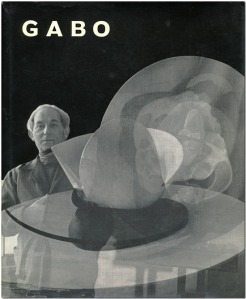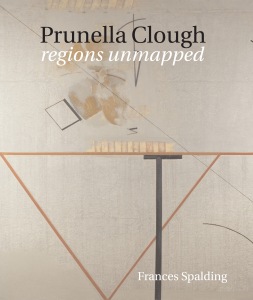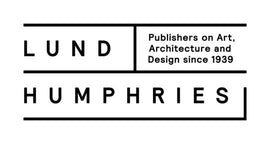Lund Humphries Landmarks – Looking Back, Looking Forward
Valerie Holman rounds off a year of Lund Humphries anniversary celebrations with a selection of the company’s highlights and successes of the past 75 years.
To celebrate 75 years of art publishing, every month this year a Lund Humphries author has focused on a single ‘landmark’ publication from the firm’s long list, bringing to light the stories behind the books, the role of design and the pioneering status of individual volumes. What, though, has been the cumulative effect of a publishing house that for three-quarters of a century has been producing illustrated books on modern British art? Two perspectives from which this question might be answered are those of the artist, and those of the reader.
One of Peter Gregory’s principal aims, as Chairman of Lund Humphries Publishers, was to ‘honour’ contemporary artists, to reproduce as accurately as possible in book form the essential qualities of their painting and sculpture, in effect to present works of art as their creators would have us see them. As a result, the artist was often involved in the production process: Paul Nash prepared his own monograph, published posthumously in 1948, and the first volume on Ben Nicholson (also 1948) contains a note that it was ‘supervised and laid out by the artist’. Henry Moore not only chose and directed the photographers he used, but commented on the print quality of each reproduction, in volume 4 of the Complete Sculpture insisting the images be re-printed by a different technique. Barbara Hepworth, acutely sensitive to every material, in 1965 stipulated the exact paper stock to be used in a book on her drawings: as she habitually drew in pencil on board prepared with a white ground, she wished to replicate this quality of light. It was she who proposed (in 1970) that Lund Humphries produce a higher-priced limited edition of a book on her work to cover the cost of the normal trade edition, a two-tier form of publication that continues to this day.

Lund Humphries continues to work with artists to produce beatiful limited edition titles. Tom Hammick’s three-part colour etching Fallout, has been created specially for the new publication Tom Hammick: Wall, Window, World (due June 2015)
In the post-war era, ‘museums without walls’, or imaginary museums, expressed the idea of art as images in the mind, visual memories of painting and sculpture acquired through better access to good quality reproductions and new media such as television. To cater for this popular interest in acquiring and studying art in reproduction, the firm introduced new ways of presenting illustrations so that its art books would more effectively communicate with readers. For example, when Bernard Leach found there was no published collection of a potter’s canon, at his urging, Lund Humphries produced A Potter’s Portfolio in 1951 ‘in the form of a large book from which the illustrations can be extracted’, with the idea that they would be framed and hung up in homes and studios. To enhance the reader’s perception of three dimensions, a pair of special spectacles was attached to each copy of Gabo: constructions, sculpture, paintings, drawings engravings (1957), while for Pre-Columbian Mexican Miniatures (1971) photographic enlargements were used deliberately throughout to show that humble clay objects, measuring less than five inches, in formal terms stood comparison with full-scale works of sculpture.

A special pair of stereographic glasses helped enhance readers’ visual engagement with Gabo: constructions, sculpture, paintings, drawings engravings
At the end of this anniversary year, it seems appropriate to highlight not solely individual artists, readers and books, and the relationships between them, but also consistent features of the list as a whole. Lund Humphries’ policy to extend serious coverage of modern British art and artists beyond the canon and the familiar has, from the first volume on Henry Moore in 1944, given prominence to sculpture, ranging from the traditional format of Elisabeth Frink (1972) to The Sculpture of Bill Woodrow (2013) whose radical design concept was by Woodrow’s son. Publications such as these have helped lay a solid foundation for the recent upsurge of public interest in three-dimensional art: this autumn, for the first time, prices for modern sculpture at international auction equalled those for painting. Since 2001, there has been a marked increase in the number of books on modern women artists, notably Gillian Ayres, Wilhelmina Barns-Graham, Sandra Blow, Prunella Clough, Sheila Fell, Sheila Girling, Rose Hilton, Margaret Mellis and Barbara Rae. Some had previously been less widely known than their partners or had adopted a lifestyle out of the public eye, while others already had a long exhibiting career but, in almost every case, the first major publication on their work was a Lund Humphries monograph.

Leading the way in publishing the books on the art of modern British women, such as Prunella Clough: Regions Unmapped (2012)
As recent landmark blogs have shown, artists such as William Scott, or Ivon Hitchens at the age of eighty, acquired due recognition relatively late in their careers, but readers have also been introduced to younger artists, such as Kurt Jackson, through Lund Humphries publications. While books to accompany exhibitions, and works of reference such as Malevich: Painting the Absolute and Hans Hofmann: Catalogue Raisonné of Paintings, continue to provide fresh perspectives, it is monographs such as those on Eduardo Paolozzi and Craigie Aitchison that have remained central to the firm’s ethos from 1944 to the present day.
Valerie Holman is an independent art historian who writes on twentieth-century art and publishing. She recently wrote a brief history of Lund Humphries and is the co-author of The Sculpture of F.E. McWilliam (Lund Humphries, 2012).

